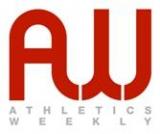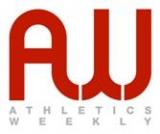Folders |
Biomechanics in athletesPublished by
Matt Long, Jamie French and Barry Cook explore the topic of biomechanics in athletesThis article sets out to explore the roots of US coaching guru Alberto Salazar and his work of making subtle biomechanical adjustments to his athletes, which include double Olympic and world champion Mo Farah. Biomechanical focusSalazar took a real interest in running form from 2006 onwards after being mesmerised by the style of double world record-holder and Olympic champion Kenenisa Bekele. After consulting multiple Olympic gold medallist Michael Johnson and staff at his performance centre, who measured the angles of Bekele s arms and legs during his stride pattern, the realisation hit Salazar that Bekele had an arm action that was not dissimilar to that of a sprinter. The rapid trail-leg retraction effected by sprinters enabled their running to (a) generate more power and (b) give the foot a shorter distance to travel before it arrived back ready to begin another stride, thus allowing for an increase in cadence and ultimately speed. Salazar, who won three consecutive New York City Marathon titles in the 1980s, carried out his work within the Nike Oregon Project, which was created back in 2001 as a response to perceived poor performance by American endurance athletes. Salazar began to experiment with top US distance runner, Dathan Ritzenhein, who had finished ninth in the 2008 Beijing Olympic marathon and who parted with long-standing coach Brad Hudson in May 2009. Salazar noticed a range of biomechanical deficiencies with his newly acquired athlete and worked on effecting change with some of the following idiosyncrasies. 1. Heel striking Video analysis showed that Ritzenhein was a heel striker who was overstriding with a resulting braking effect upon ground contact. This is caused by Newton s third law of motion that states: For every action, there is an equal and opposite reaction.” This means that if you overstride and heel strike, every time you hit the ground the reaction forces are therefore backwards and upwards, giving a braking effect instead of downwards and forwards. In analysing Bekele, Salazar observed that by drawing his lower leg down and backward, and slightly pulling up the toe to a more neutral foot position, a positive acceleration could be achieved by minimising this braking effect and allowing for a much quicker transfer into the support and drive phase of the stride. 2. Foot placement With the aid of Nike biomechanical expert Gordon Valiant, Salazar studied the loading patterns in terms of the amount of force being exerted on parts of the foot during impact. Salazar noted that Ritzenhein was placing his foot too far forward in front of his centre of mass, which was inefficient as the hamstring was having to work hard to pull the trunk of the body over the forefoot. By working on pulling the foot-strike closer to underneath the centre of mass, Salazar realised this would also decrease the braking effect described above. 3. Hips Ritzenhein s hips were seen to be relatively low compared to the high hips” of the 11-time world senior cross country champion Bekele, which were carried directly under the body. Salazar became aware that high hips allows a longer stride length along with force to be more directly transferred up through legs, hips and upper body, effecting greater forward propulsion. 4. Elbow drive In comparing Ritzenhein to the great Bekele, Salazar observed that the former had an elbow drive of approximately 60 degrees whereas the latter could generate more force by driving his elbows back in the region of 70 degrees. The drive of the arms backward balances the lower body forces, meaning that a greater, more forceful arm drive will balance more force being produced by the legs. 5. Hands The level of attention to detail which Salazar gave to Ritzenhein was meticulous. It even stretched to him being challenged to drop his previously rigid upturned thumbs in favour of a more relaxed position on his index fingers. Bringing about changeNotably the modification of Ritzenhein s style has not been without problems and he has suffered injuries, but as Salazar himself acknowledged: When you start changing an athlete s form, there s always a risk.” Since switching to Salazar, Ritzenhein finished sixth in the 2009 world championships 10,000m in a personal best of 27:22.28 and became only the third American in history to break the 13-minute barrier for 5000m in that same year. He also took a world half- marathon championship bronze in Birmingham in 60:00 and set a marathon PB of 2:07:47 in 2012. Despite him leaving the Nike Oregon Project in May of this year to move closer to home in Grand Rapids, Michigan, Ritzenhein still seeks advice from Salazar. The point of this piece is not to argue whether Alberto Salazar deserves to be ranked as an all- time great coach as many would argue that there are far greater exponents of the art of distance running than Ritzenhein. The thrust of our argument is that it is possible for coaches to make evidence-based interventions to change the running style of their athletes to attempt to produce more economical, efficient and effective performance over a period of time. So what? The aforementioned arguments leave both coach and athlete with a number of questions for self- reflection: 1. Do I need to challenge the conventional stereotype that sprinting and endurance running are two mutually exclusive athletic disciplines? 2. As a coach or athlete do I pay enough attention to the technical aspects of running? 3. As an athlete am I self-aware about the biomechanics which my body is effecting during training or competition? 4. As a coach am I cognizant of what I need to be looking at in terms of the biomechanics of my athlete(s)? Now what? The basic technical template for endurance offered as best practice by UKA is modelled on the following: Tall posture with high hips. While this technical template tells you the outcome that we, as coaches and athletes, are aiming for, it does not tell us about the journey needed to get there. In a future article in Athletics Weekly this will be explored with reference to the recent work of Dr Jessica Leitch from Oxford University. Dr Matt Long celebrates his 100th coach education article alongside Jamie French and Barry Cook and they all work as UKA coach education tutors The post Biomechanics in athletes appeared first on Athletics Weekly. Read the full article at: www.athleticsweekly.com
More news |






